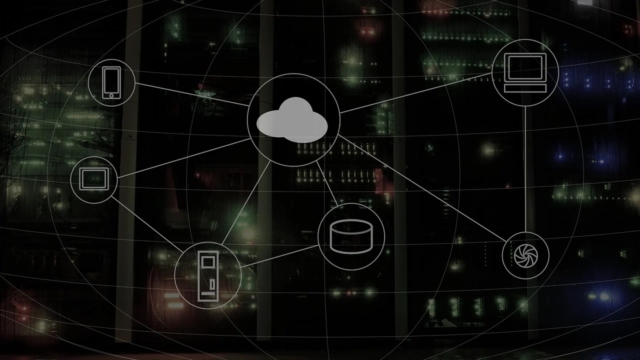In this article, we'll cover:
Of all the terms to enter the lexicon in recent years, few have been more ubiquitous than ‘hybrid’. More and more people drive hybrid cars (vehicles using a combination of conventional fuel and electric power), or they may even have hybrid plants (produced by cross-pollinating more than one flower) at home.
There’s also hybrid IT. This is something that’s been embraced by a growing number of businesses and other organisations over the last few years, and it’s become an integral part of ongoing digital transformation. But what exactly does hybrid IT mean, and what does it do? What advantages does a hybrid IT environment offer? And what challenges does it come with?
What is Hybrid IT?
In this concise guide, we’ll define hybrid IT and introduce you to the concept. We’ll also discuss the advantages of hybrid IT, the challenges involved in its implementation, and some of the best practices for hybrid IT management. We’ll then look at how RingCentral can help make hybrid IT management simpler and more effective.
Definition of hybrid IT
As the name suggests, hybrid IT involves a mix of IT infrastructure platforms; private cloud and public cloud services; as well as on-premises legacy technologies. Previously, organisations tended to converge on standardised and uniform IT infrastructure arrangements. But there has been a trend towards more bespoke solutions in recent years as complexity has grown.
There are three main reasons for this shift towards hybrid IT: changing business needs, the rise of cost-effective cloud-based software as a service (SaaS) solutions, and the need to exert greater control over data as regulatory requirements are tightened.

Hybrid IT infrastructure
Some infrastructure is managed in-house with hybrid IT arrangements, while other aspects are outsourced to third-party data centres via cloud computing. This allows organisations to strike a balance that suits them. For example, some may choose to retain on-premises legacy technologies as a backup or for security purposes.
Hybrid IT vs hybrid cloud
The terms ‘hybrid IT’ and ‘hybrid cloud’ are sometimes used interchangeably. A hybrid cloud environment involves a combination of public and private cloud infrastructures, some managed in-house and some by third-party private or public cloud providers. The key point here is that hybrid cloud environments are entirely cloud-based; it’s just the cloud models involved, which vary.

Hybrid cloud and hybrid IT are not the same thing. Hybrid IT is made up of a wide variety of technologies. These might include the Internet of Things, edge computing, on-premises IT infrastructure, and public and private cloud environments. Therefore, hybrid IT is a wider and more inclusive subject than the hybrid cloud.
Advantages of hybrid IT
There are numerous advantages to choosing hybrid IT infrastructure over other arrangements. In particular, its flexibility means that it can meetdiverse organisations’ needss, along with suppliers and customers. In addition, it enables IT decision-makers to ensure specific technology platforms are aligned with workloads and applications.
Another benefit of hybrid IT is that it allows businesses and other organisations to choose from various hybrid cloud offerings. That includes providers such as Microsoft Azure and Amazon Web Services (AWS).
Cloud migration issues
The process of shifting applications and data to the cloud is known as cloud migration. However, not all legacy systems can be migrated to the cloud – at least, not without it costing a fortune. This is another reason why so many organisations opt for hybrid IT services and multi-cloud arrangements.
Security
The days when cybersecurity was an afterthought – a loose end tied up at the end of a project – are long gone. Today, organisations must prioritise security every step of the way. Hybrid IT can provide businesses with greater control over where they place their data, potentially enhancing overall security.
However, this must follow a thorough security and governance audit, including an evaluation of all policies and user privileges. As we’ll discuss in more detail, hybrid IT can add complexity as it involves a mixture of on-premises, private cloud, and public cloud solutions.

Cost reduction
Hybrid IT can significantly improve efficiency, which in turn can deliver substantial reductions in cost. Because hybrid IT uses cloud-based SaaS applications, it can take advantage of the significant cost savings this software offers.
However, all of this will depend on effective IT management – not to mention cloud management if this is required. If the introduction of hybrid IT arrangements is incompetently managed, this could result in a technological sprawl. In other words, complex systems that become increasingly challenging to oversee.
Challenges with hybrid IT
While hybrid IT has major advantages, it also comes with its fair share of challenges. We’ve already alluded to some of these, but we’ll discuss them in more detail here. Suffice to say for now that many of these challenges can be addressed through effective management and a clear, comprehensive cloud strategy.
Complex management
We’ve already noted in the previous section that hybrid IT infrastructure can be difficult to manage. This is because there are so many different elements to it. Also, because hybrid IT solutions are bespoke – potentially using a plethora of technologies – there’s no one-size-fits-all solution to managing them all.

Legacy IT
There are numerous reasons why organisations may want to retain some legacy technologies. The most obvious of these is the cost involved. Migrating certain kinds of legacy infrastructure to the cloud can be expensive.
But, as we’ve discussed, this combination of cloud-based and legacy technologies can add up to a great deal of complexity. It will take authoritative management and regular auditing to prevent hybrid IT infrastructure from turning into a bit of a muddle.
Traditional IT is slow.
Another potential problem with hybrid IT is that the legacy technologies involved can be slower than their cloud-based counterparts. This is because many of these technologies will have been in place for years and may have been superseded by recent innovations. It may also result in performance bottlenecks.
Scalability may also be an issue, as this older technology can be harder to scale. By contrast, cloud architecture can be configured and rolled out much more quickly, facilitating the faster rollout of new software.
Hybrid IT management best practices
Now that we’ve covered the advantages and challenges of hybrid IT, we will look at some of the best practices for managing it. So long as these best practices are in place, you could find that hybrid IT is the ideal solution for your business needs. However, without implementing these measures, the complexity may overwhelm your organisation.
Let’s take a look at some of the key measures your business should implement.
How to secure and optimise
Cybersecurity should be a top priority. The point of hybrid IT is that it allows your business to leverage the various capacities of legacy technology, public cloud, private cloud, and data centres to create a comprehensive set of services. Despite this emphasis on integration, cybersecurity is often still treated as if it is a separate concern.
This is a mistake. You must maintain a single-minded focus on security at all times. Otherwise, your ability to respond quickly and effectively to a breach could be greatly hampered. You should regularly review your IT management tools and processes so that all IT assets are adequately secured and optimised.
Using SaaS
We’ve talked about how software as a service can help organisations cut costs and enhance efficiency. There are other advantages to SaaS. In particular, you can also leverage SaaS to streamline key infrastructure tasks, including backups, patching, and operations.
Use of security controls
Comprehensive security controls are essential to keep both on-premises tech and cloud solutions secure against potential threats. Security features such as multi-factor authentication can restrict access to sensitive information and data. Both legacy and cloud-based technologies must be subject to stringent security controls.
Also, security duties and responsibilities must be clearly assigned. Your organisation must verify the identity of every user who has access to specific applications and data. Strict policies should also be in place to help your business manage any growth in service providers, as well as bring-your-own-device (BYOD) practices.
Conclusion
The technological revolution of recent years has truly transformed many businesses. From DevOps to salesforce teams and CIOs, a few aspects of our working lives have been untouched by the digital transformation we’ve seen.
What’s more, this process shows no signs of slowing down. Big data, artificial intelligence, and automation are sweeping through the world of business. This presents huge opportunities, but it comes with huge challenges – from overseeing virtualisation to ensuring functionality.
Organisations that take a proactive approach to adopt a hybrid IT model are most likely to reap real rewards. But before you rush into anything, you should take the time to carry out a detailed assessment to see what is likely to work best for your business.
We’ve noted already that the defining characteristic of hybrid IT is its bespoke nature. If you come to adopt a hybrid IT strategy, you must make sure that it’s genuinely suited to your requirements – security requirements in particular – as well as your budget.
How RingCentral supports hybrid IT management
Finally, it’s worth noting that RingCentral’s tools can simplify and streamline hybrid IT management. Its cloud communications solutions can help you stay well connected with colleagues and clients alike.
With a cloud platform for communications, your organisation can find scalable solutions designed to suit its specific needs. RingCentral will happily provide you with whatever support and guidance you might require in finding the ideal cloud-based unified communications option.
Originally published Feb 16, 2021, updated May 15, 2021


